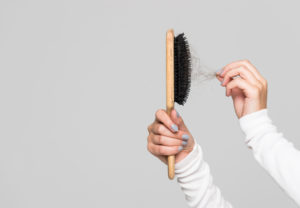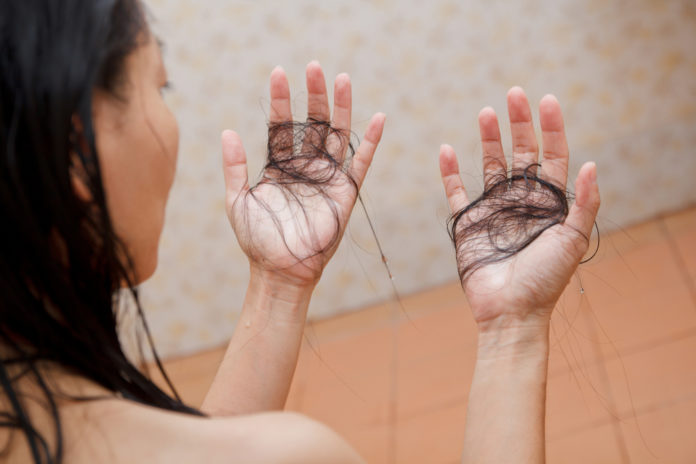Hair loss is something that many people fear, especially men as they get older. Whilst balding and losing hair is most associated with aging males, it can affect anyone. This is because there are a number of conditions and deficiencies that can cause hair loss, many of which are not preventable. Most people assume hair loss is hereditary, but there are so many other things besides genetics that can determine your likelihood of losing your hair, some of which your probably didn’t even know about!
We’ve put together a list of five common causes of hair loss to give you a better idea of who can be affected by it and why, as well as whether the issue can be tackled.
1. Alopecia
One of the most common causes of hair loss worldwide is an autoimmune condition called alopecia. There are three main types of alopecia, with alopecia areata being the most prevalent. It is characterized by the loss of small areas of hair, usually no bigger than a coin, ceasing to grow. The second type is alopecia totalis which refers to those who have lost all the hair on their scalp. The third type is known as alopecia universalis which is the term given to people who have lost all of their hair on their scalp and boy. This can include eyelashes and eyebrows.
Each type of alopecia is caused by the body’s immune system attacking the hair follicles. The good news is, it doesn’t kill the hair follicles. This means the hair can and sometimes does grow back later on. Medications are available for the condition which can stimulate the hair growth, though it doesn’t always work.
Male pattern baldness is a common type of alopecia. Genetic predisposition influences the onset, particularly with a family history of baldness. Dihydrotestosterone (DHT), derived from testosterone, is critical in affecting genetically sensitive hair follicles and causing gradual miniaturization until hair production ceases. Onset typically occurs in adulthood, progressing with a receding hairline and crown thinning. Check out Singapore hair loss treatment for male pattern baldness and other forms of alopecia with an expert.
2. Traction alopecia
There’s nothing you can do to stop alopecia areata, but there is a way you minimize your chances of developing traction alopecia. This is a condition that causes hair loss when the hair is pulled back tightly over an extended period of time. For example, people who regularly wear their hair tied back in tight ponytails, or those who have braids and/or dreadlocks, may experience traction alopecia.
Depending on the severity of alopecia, it might not be possible for the hair to regrow because the follicles might be permanently damaged, meaning the hair is gone for good. This isn’t always the case, though, with some people managing to reverse the effects by stopping wearing their hair in tight hairstyles.

3. Cancer treatment
Cancer treatments like radiotherapy and chemotherapy can cause hair loss in patients, albeit temporary. The reason behind it is because drugs like chemotherapy are designed to kill any and all cells within the body that divide at a fast rate. Whilst this includes cancer cells, it also includes hair follicles.
Once treatment is finished, the hair should start to grow back, but patients who have undergone a very high dose of certain types of chemotherapy may find that their hair takes a long time to grow back, and in rare cases, it may never re-grow.
Maintain a balanced diet with iron, zinc, and biotin to minimize postpartum hair loss. Consider postnatal supplements as advised by your healthcare provider. When caring for your hair, be gentle in washing and brushing, use mild products, and avoid tight hairstyles that stress the hair. Manage stress through deep breathing or meditation, prioritize good sleep hygiene, and stay adequately hydrated. Postpartum hair shedding is temporary, with most women experiencing a return to normal hair growth within a few months to a year after childbirth.
4. Childbirth
After a person gives birth, their estrogen levels drastically reduce, causing the hair to thin out. During pregnancy, the increased hormones mean hair is often thicker and grows faster, but a few months after childbirth, these hormone levels drop which causes the hair to shed. Under normal circumstances, you can expect to lose up to 100 hairs a day, but new mums can sometimes lose up to four times that. The good news, it’s typically temporary and should settle down after a few months.
5. Iron deficiency
Iron deficiency anemia can cause a myriad of symptoms, including fatigue and shortness of breath, but hair loss is a side effect few people know about. Iron deficiencies are typically treated with tablets which can help to fix issue.
Once you start receiving an adequate amount of iron through dietary changes or supplements, you may notice improvements in your hair health. On average, hair grows about half an inch (1.25 cm) per month. However, this is a general estimate and individual results can vary. It typically takes several months for noticeable changes in hair growth to occur after addressing a nutritional deficiency. It’s important to be patient and consistent with your efforts to improve your iron levels.
Summary
If you’re experiencing hair loss, speak to your GP as it could be a sign of an underlying medical condition. The good news is, most cases of hair loss are temporary and can be effectively treated.


